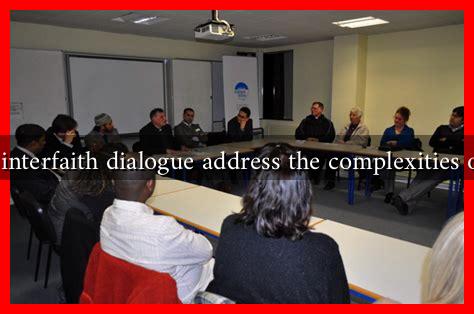-
Table of Contents
How Can Interfaith Dialogue Address the Complexities of Veiling?
The practice of veiling, particularly among Muslim women, has sparked extensive debate and discussion across various cultural and religious contexts. While veiling can be a symbol of faith and identity for many, it can also be perceived as a sign of oppression or cultural imposition. Interfaith dialogue offers a platform to explore these complexities, fostering understanding and respect among diverse communities. This article delves into how interfaith dialogue can address the multifaceted issues surrounding veiling.
The Significance of Veiling in Different Cultures
Veiling practices vary significantly across cultures and religions, each carrying its own meanings and implications. Understanding these differences is crucial for effective interfaith dialogue. Here are some key points to consider:
- Religious Significance: In Islam, veiling is often seen as an expression of modesty and piety. The Quran mentions the importance of modest dress, which many interpret as a call to wear the hijab or other forms of veiling.
- Cultural Context: In some cultures, veiling is intertwined with national identity. For instance, in countries like Iran, the hijab is mandated by law, while in Turkey, it has been a subject of political contention.
- Personal Choice: For many women, wearing a veil is a personal choice that reflects their beliefs and values. This aspect is often overlooked in broader discussions about veiling.
Interfaith Dialogue: A Pathway to Understanding
Interfaith dialogue can play a pivotal role in addressing the complexities of veiling by promoting mutual understanding and respect. Here are several ways it can achieve this:
- Creating Safe Spaces: Interfaith dialogues provide a platform for individuals from different backgrounds to share their experiences and perspectives on veiling. This can help dispel myths and stereotypes.
- Encouraging Empathy: By listening to personal stories, participants can develop empathy for those who choose to veil and those who do not, fostering a more nuanced understanding of the issue.
- Highlighting Common Values: Many religious traditions emphasize values such as respect, dignity, and freedom of choice. Interfaith dialogue can highlight these shared values, promoting a sense of solidarity among different faith communities.
Case Studies: Successful Interfaith Initiatives
Several interfaith initiatives have successfully addressed the complexities of veiling, demonstrating the potential for dialogue to foster understanding:
- The Women’s Interfaith Network: This organization brings together women from various faith backgrounds to discuss issues related to gender, including veiling. Their workshops have led to increased awareness and respect for diverse practices.
- Interfaith Youth Core: This organization engages young people in interfaith dialogue, encouraging them to explore topics like veiling. Their programs have shown that youth are often more open-minded and willing to engage in discussions about cultural practices.
- Local Community Dialogues: Many communities have initiated local interfaith dialogues that include discussions on veiling. These grassroots efforts have helped to build bridges between different cultural groups.
Statistics and Research Findings
Research indicates that interfaith dialogue can significantly impact perceptions of veiling:
- A study by the Pew Research Center found that 62% of Americans believe that understanding different cultures can lead to greater acceptance of practices like veiling.
- According to a report by the Institute for Social Policy and Understanding, 70% of Muslim women who wear the hijab feel that interfaith dialogue has positively influenced their interactions with non-Muslims.
Conclusion: The Way Forward
Interfaith dialogue serves as a vital tool in addressing the complexities surrounding veiling. By fostering understanding, empathy, and respect, such dialogues can help bridge cultural divides and promote a more inclusive society. As communities continue to grapple with issues of identity and expression, the importance of open and respectful conversations cannot be overstated. Engaging in interfaith dialogue not only enriches our understanding of veiling but also strengthens the fabric of our diverse societies.
For further reading on the importance of interfaith dialogue, consider exploring resources from organizations like Interfaith Youth Core and Pew Research Center.

